I have used Amazon affiliate links on this page. As an Amazon Associate, I earn a commission from qualifying purchases at no added cost to you. Thank you!
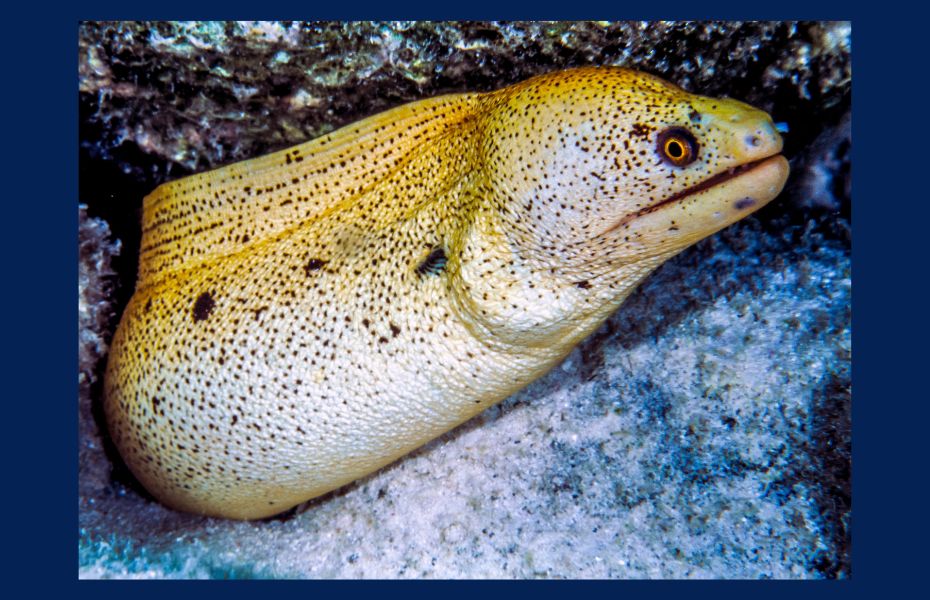
The Banana eel, also known as The goldentail moray, is a unique and fascinating species of eel that can make a great addition to any saltwater aquarium. In this blog post, we will dive into the scientific taxonomy, appearance, natural habitat, diet, size, water parameters, tank size, aqua scaping, behavior and temperament, tankmates, diseases and treatments, disease prevention, breeding, and special care tips for banana eels. Note that we will be referring to this Eal as both Banana Eel and the Goldentail Morey throughout our blog post.
Table of Contents
Scientific Taxonomy Of Banana Eel
Banana Eel is a species of marine eel that belongs to the family Muraenidae. Its scientific name is Gymnothorax miliaris. Goldentail Moray is classified under the Animalia Kingdom, Chordata Phylum, Actinopterygii Class, and Anguilliformes Order. The Anguilliformes Order is characterized by the elongated body of eels that are found in both freshwater and marine environments. The Muraenidae family includes various species of eels and is commonly known as the Moray Eel family. The Gymnothorax genus is a group of marine eels that have a snake-like appearance and can grow up to 120 centimeters in length. This beautiful eel is commonly found in the Western Atlantic Ocean, particularly in the Caribbean Sea and the Gulf of Mexico. Its striking yellow tail sets it apart from other species of eels and makes it a popular choice for aquariums.
Banana Eel Appearance
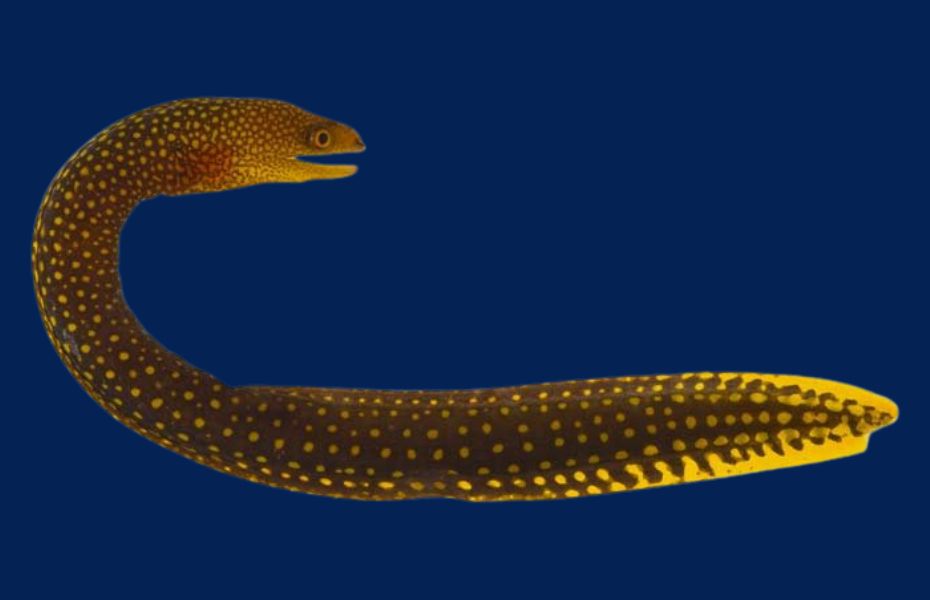
Banana eels have a yellow-orange color, which gives them their common name. They have long, slender bodies and pointed heads. Their body is covered in small scales and they have sharp teeth. They can grow up to 2 feet in length, but most individuals will reach a maximum size of around 1 foot.
Distribution In The Wild
The banana eel has a wide distribution throughout the western Atlantic Ocean. This includes countries and regions such as the Caribbean Sea, the Gulf of Mexico, and countries along the southeastern coast of North America, as well as the Bermuda islands, and Southeast Brazil. They have also been reported in the islands in the center of the Atlantic Ocean such as Saint Helena and Ascension, and close to the African coast in the Cape Verde Islands. This wide distribution means that they can be found in a variety of habitats, including coral reefs, lagoons, and mangrove swamps. It’s a versatile species that can adapt to different conditions, hence one of the reasons why this moray eel has a wide distribution.
Natural Habitat Of The Banana Eel
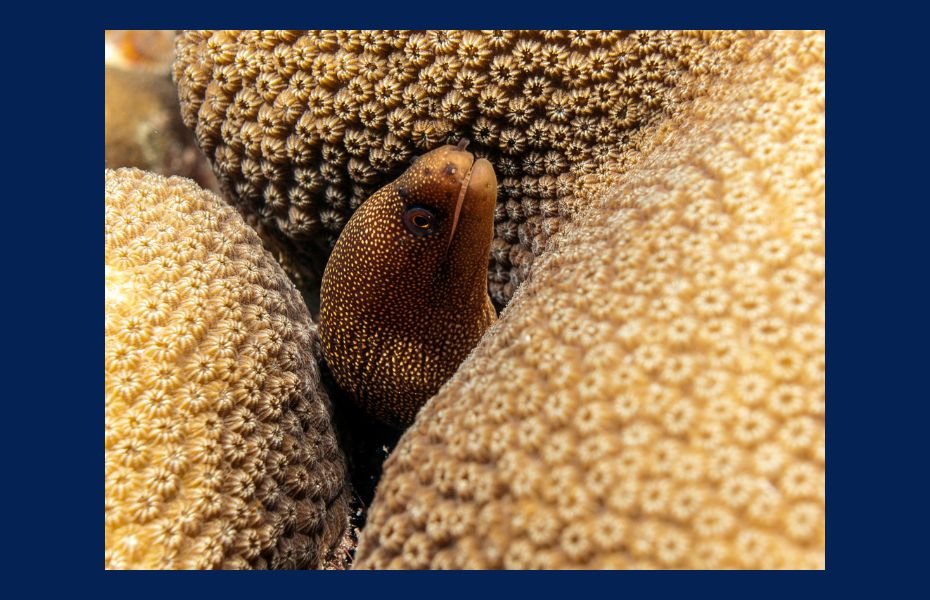
The banana eel is typically found on rocky and coral reef slopes between the surface and 35 meters (115.5 feet) in depth. They prefer to live in these habitats because it provides them with plenty of hiding spots and food sources. They are known to hide among the coral and rocks, and they are also known to be active at night when they come out to hunt for food. The maximum depth at which they have been reported is 60 meters (198 feet).
Hence, these eels can be found in a variety of habitats such as coral reefs, lagoons, and mangrove swamps. They are usually found in shallow waters and are known to hide in crevices and holes in the reef.
Coral reefs provide a rich and diverse environment for banana eels to live in. These eels can be found hiding among the coral, rocks, and crevices in the reef. They are also known to be active at night, which is when they come out to hunt for food.
In addition to coral reefs, banana eels are also found in lagoons. These eels can be found in the shallow waters of lagoons, where they can hide among the rocks and coral. They are also known to be active at night when they come out to hunt for food.
Mangrove swamps are another habitat where banana eels can be found. These eels can be found hiding among the roots of mangrove trees, where they can hide from predators and hunt for food.
As you can see, the natural habitat of the banana eel is a rich and diverse environment that provides them with plenty of hiding spots and food sources. Hence, in captivity, it is important to replicate this environment as much as possible if you want to keep these eels healthy and happy.
Banana Eel Diet
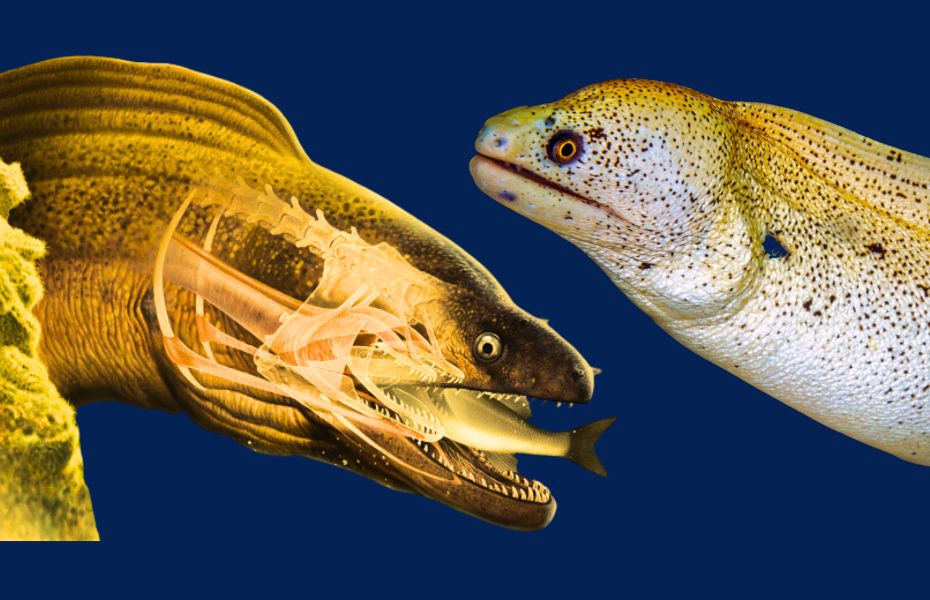
As mentioned earlier, Gymnothorax miliaris (Banana Eel), is a carnivorous species that feeds on a variety of small fish, crustaceans, and mollusks in the wild. They are known to be opportunistic hunters, and they will eat whatever prey is readily available to them.
In captivity, they can be fed a variety of commercial fish foods, including live or frozen food such as silversides, krill, squid, and other meaty foods. It is important to provide a varied diet that includes a mix of different types of food to ensure that the eel receives all the necessary nutrients.
One of the most popular commercial fish foods for eels is frozen Mysis shrimp. This type of food is rich in protein, and it is also a natural food source for eels in the wild. It is also a good idea to feed them a variety of other frozen foods, such as silversides, krill, and squid, to provide a varied diet.
Another option is to feed them with live feeder fish. But this is not recommended as it carries some risks such as the introduction of parasites or diseases to the tank.
It’s important to note that eels in general are opportunistic feeders and they will eat whenever they have the chance. So it’s important to monitor their feeding and adjust the frequency and amount of food accordingly. The bottom line is that in the wild, these eels may not have a chance to catch prey for some sort of time. But when they do, they can eat a lot which is then good enough for a long period of time until they catch their next prey. Therefore, daily overfeeding can mess with the natural eating pattern of this beautiful eel and lead to health problems such as obesity and tons of other issues.
Ideal Water Parameters For Banana Eel
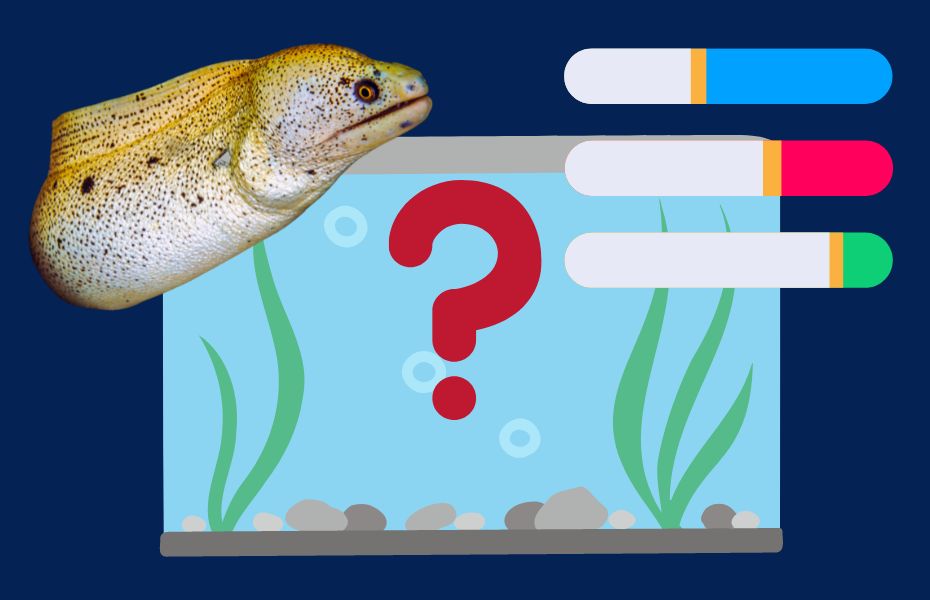
When keeping the goldentail moray, it’s important to maintain ideal water parameters to ensure the health and well-being of the eel.
Temperature:
The ideal water temperature for this species is between 72 and 78 degrees Fahrenheit. They are tropical species and need warmer water to thrive. Sudden changes in temperature can be stressful for them, so it’s important to keep the temperature stable.
pH:
The ideal pH level for this species is between 8.1 and 8.4. They prefer slightly alkaline water, which is similar to the natural environment they are found in.
Salinity:
The ideal salinity level for this species is around 1.025. This is similar to the salinity level of natural seawater. You can measure it using a refractometer.
Ammonia, Nitrite, Nitrate:
These parameters should be kept at zero. They are toxic to fish, and even small concentrations can be harmful to the health of the eel.
Water flow:
The goldentail moray is an active swimmer and needs a moderate to high water flow. This will provide the eel with oxygenated water and help to keep the water clean.
It’s important to regularly test the water parameters and make adjustments as needed. This will help to ensure that the eel is living in an environment that is similar to its natural habitat and that it is healthy and happy.
Tank Size
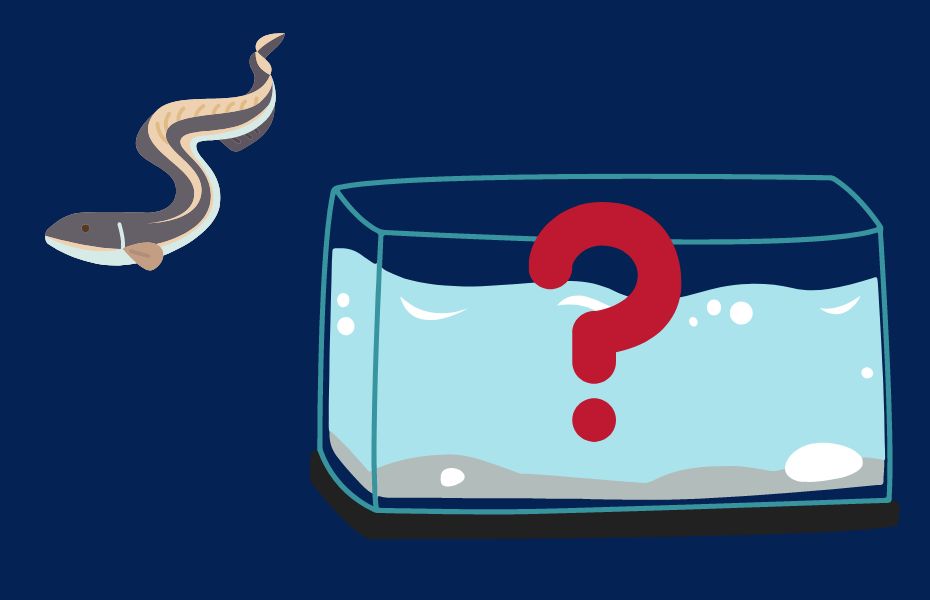
When keeping the Banana Eel in captivity, it’s important to provide a tank that is large enough to accommodate the eel’s size and swimming needs.
These eels can grow up to 2 feet in length, and they are active swimmers, so they need plenty of space to move around. A minimum tank size of 100 gallons is recommended for keeping a single eel. However, bigger tanks are always better as they provide more space for the eel to swim around, and hide and provide it with a more natural environment.
The tank should also have plenty of hiding spots and crevices, such as rock formations, caves, and overhangs, for the eel to retreat to. This will help to reduce stress and provide the eel with a sense of security.
It’s important to note that eels are known to be escape artists, so it’s important to have a tight-fitting lid on the tank to prevent the eel from escaping.
Aquascaping Tips For Banana Eel
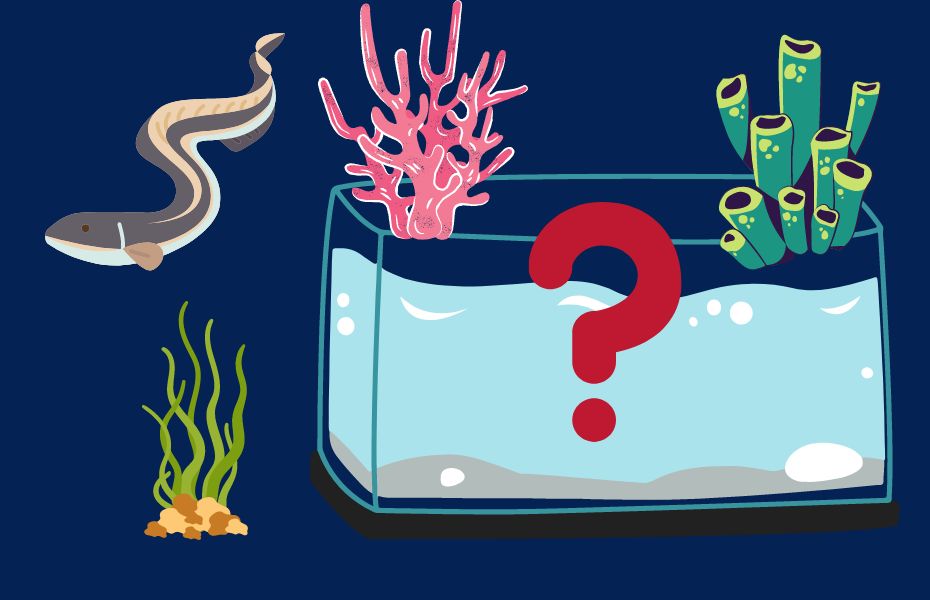
Aquascaping is the process of creating a visually appealing and natural looking environment for the goldentail moray in captivity.
The first step in aquascaping for the eel is to provide plenty of hiding spots and crevices. This can be achieved by using rock formations, caves, and overhangs. These structures will provide the eel with a sense of security and help to reduce stress. The eel will also use these structures to hide and hunt for food.
It’s also important to provide plenty of live rock and live sand to create a natural environment for the eel. Live rock will provide the eel with a natural environment to explore. This addition will also provide a source of food to other critters in the tank in the form of microorganisms that live on the rock. On the other hand live sand will provide the eel with a natural substrate to move around on and will also provide a source of food in the form of microorganisms that live in the sand.
It’s important to note that the goldentail moray is an active swimmer and needs plenty of space to move around. So it’s important to provide a tank that is large enough to accommodate the eel’s size and swimming needs.
Banana Eel Behaviour And The Temperament
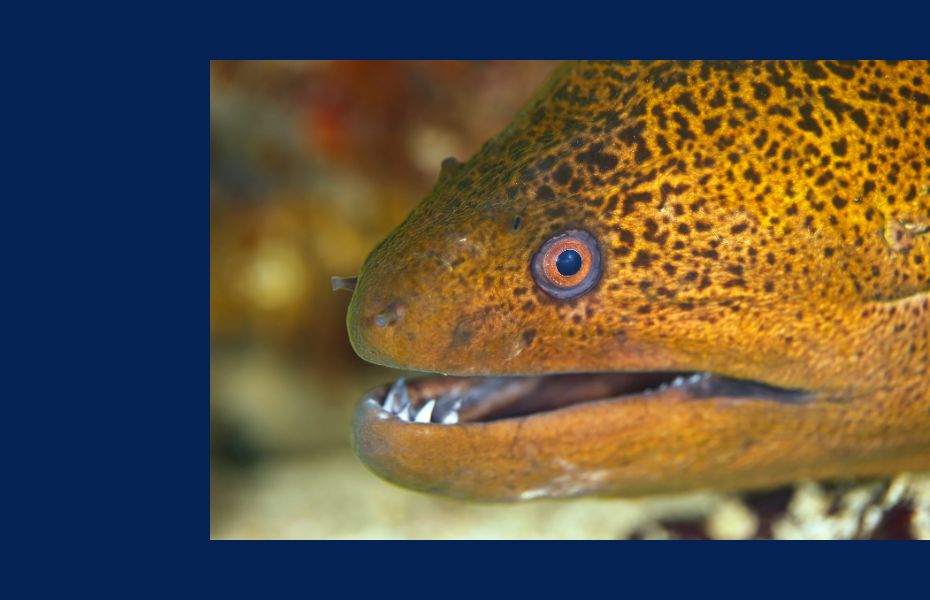
The Banana Eel, compared to other aggressive moray eels, is known for its peaceful behavior and temperament. They are generally non-aggressive and can be kept with a variety of other fish and invertebrates. They are also known to be shy at first and will spend most of their time hiding in crevices and holes. However, these eels will become more active and curious as they become accustomed to their new surroundings.
When first introduced to the tank, they may spend most of their time hiding and only come out to feed. As they become more comfortable with their new environment, they will start to explore more and become more active.
These eels are known to be curious creatures and will often come out to investigate their surroundings. They are also known to be active at night, when they come out to hunt for food.
It’s important to note that eels are known to be escape artists. So it’s vital portant to have a tight-fitting lid on the tank to prevent the eel from escaping.
Banana Eel Tankmates

As mentioned in the above section, the Goldentail Moray is known for its peaceful behavior and temperament, so it can be kept with a variety of other fish and invertebrates. Some suitable tankmates for this eel include:
- Other peaceful eel species such as the snowflake eel and the peacock eel
- Other peaceful fish species such as the clownfish, damselfish, and gobies while the Goldentail Moray is known for its peaceful behavior and temperament. It is a carnivorous species and may see snails, shrimps, and crabs as potential meals. Therefore, it’s important to be aware of this and to monitor the tank closely if you decide to keep these species together.
Rule of the thumb is to choose tankmates that are larger than the eel or that are able to defend themselves.
On the other hand, it is also important to avoid keeping aggressive fish species such as triggers, groupers, and puffers with the Goldentail Moray as they may bully or attack the eel.
Diseases and Treatments
Banana eels are generally hardy and less prone to diseases if kept in optimal conditions. However, they can still be susceptible to common aquarium diseases such as bacterial infections, fungal infections, and parasites.
It’s important to regularly observe the eel for any signs of illness, such as loss of appetite, abnormal swimming behavior, or visible lesions.
If a disease is suspected, it’s recommended to consult with a veterinarian who specializes in fish to diagnose and provide appropriate treatment options, which may include medications or quarantine procedures.
Banana Eel Disease Prevention
Maintaining good water quality is crucial for preventing diseases in banana eels. Regular water testing, proper filtration, and regular water changes are essential.
Quarantining any new fish or invertebrates before introducing them to the main tank can help prevent the introduction of potential diseases.
Avoiding overcrowding and providing a stress-free environment can also contribute to disease prevention.
Breeding
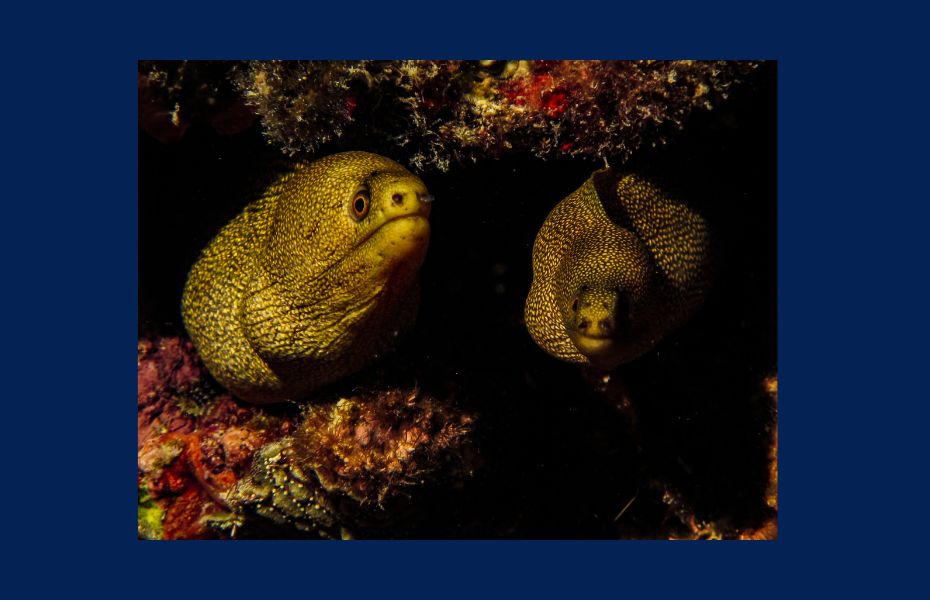
Breeding banana eels in captivity is challenging and rarely accomplished. They are known to reproduce in the wild during their migratory phase, which involves releasing eggs and sperm into the open ocean.
Due to the complex nature of their reproductive behavior, reproducing them in captivity requires specialized conditions. These include as simulating the oceanic environment, providing suitable cues for spawning, and careful monitoring of water parameters.
Therefore, it’s recommended for experienced and dedicated aquarists to attempt breeding banana eels.
Final Tips
Banana eels have a strong feeding response and can become accustomed to hand feeding. This can be a great way to interact with the eel and establish a bond, but caution should be exercised to avoid accidental bites.
Regular maintenance of the aquarium, including cleaning the tank, removing excess waste, and providing proper filtration, is important for the overall health of the eel.
Observing the eel’s behavior and ensuring it displays normal feeding patterns and activity levels is crucial. Any sudden changes in behavior should be monitored and addressed promptly.
Wanna learn about other moray eels in the hobby? Read this now